With several options to choose from, buying a smartphone can become a confusing adventure for many. Although the 70K market wasn't that noticeable for some time, it has now gotten a place to explore, as premium midrange phones are getting more pricier. So, the 70K price bracket has gotten competitive these days. That’s because this category bridges the gap between mid-range and premium smartphones, offering flagship-like features at a relatively affordable price. However, not all phones in this range strike the right balance between price and overall performance. To help you make an informed decision, here is our list of the best phones under NPR 70000 in Nepal.
How to find the best phones under NPR 70,000 in Nepal?
Phones under 70K offer a blend of premium design, powerful performance, and flagship-grade features. In this price range, you should expect a high refresh rate OLED display, a premium build quality, and an official IP rating for water and dust resistance. Brands like Samsung and Xiaomi offer IP67 or even IP68-certified smartphones in this segment.
Performance-wise, these phones should come with high-end chipsets, making them suitable for gaming and multitasking. Camera quality also gets a significant boost, with features like OIS, 4K recording, and advanced image processing. If you're looking for a premium smartphone experience without breaking the bank, this is the segment to explore.
- You can purchase all these smartphones under Rs. 70,000 from our affiliate partner Hukut Store!
6. OnePlus Nord 4
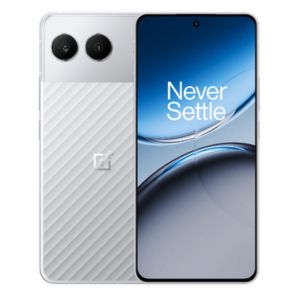
The OnePlus Nord 4 may have arrived late in Nepal, but it firmly secures the fifth spot among the best smartphones under 70,000 in Nepal. It boasts a sturdy all-metal design and comes in three stunning colors: Obsidian Midnight, Mercurial Green, and Oasis Green. Powering the device is a massive 5500mAh battery with blazing-fast 100W SuperVOOC charging, capable of reaching 50% in just 10 minutes.
On the display front, it features a 6.74-inch AMOLED panel with 10-bit color depth and a smooth 120Hz refresh rate. With an impressive peak brightness of 2150 nits, it handles HDR content on Netflix exceptionally well, offering vibrant colors, deep contrast, and excellent visibility.
Flagship-grade processor
Performance-wise, the phone is equipped with the flagship-level Snapdragon 7+ Gen 3 processor, delivering power close to the Snapdragon 8s Gen 3. It comes with 12GB or 16GB of LPDDR5x RAM and offers 256GB or 512GB of UFS 4.0 storage, ensuring top-tier speed and responsiveness for both daily tasks and gaming.
As for the cameras, the Nord 4 packs a 50MP Sony LYT 600 primary sensor and an 8MP ultrawide lens, skipping unnecessary macro or depth sensors. While a telephoto lens would have been a great addition, the existing setup still produces solid photos—though some shots might suffer from a bit of overprocessing.
OnePlus Nord 4 Specifications:
- Display: 6.74″ Tianma U8+ OLED, 2772×1240 pixels, 120Hz, 2150 nits peak brightness
- Chipset: Qualcomm Snapdragon 7+ Gen 3 (4nm mobile platform)
- Memory: 12/16GB RAM, 256/512GB UFS 4.0 storage (fixed)
- Software & UI: OxygenOS 14 on top of Android 14
- Rear Camera: Dual (50MP Sony LYT-600 main, 8MP ultrawide)
- Front Camera: 16MP sensor (hole-punch)
- Security: Fingerprint sensor (optical in-display)
- Connectivity: Dual-SIM (Nano), WiFi 6 (dual-band), Bluetooth 5.4, GPS / AGPS / Glonass / Galileo / QZSS, NFC, USB-C, 4G LTE, 5G
- Sensors: Accelerometer, Gyro, Hall, Light, Magnetic induction, Proximity, Infrared remote control
- Battery: 5500mAh with 100W charging (100W adapter inside the box)
- Price in Nepal: NPR 63,999 (12/256GB), NPR 69,999 (16/512GB)
- Read our OnePlus Nord 4 Review
- Buy OnePlus Nord 4 here
5. Nothing Phone (3a) Pro
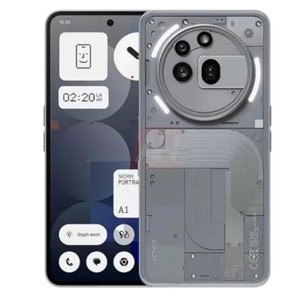
The Phone (3a) Pro keeps the transparent design and Glyph Interface found in the standard model but introduces a larger rear camera module. The overall look remains the same, with subtle hardware changes focused on photography.
The main difference is in the camera system. The Pro model features a 50MP primary sensor, a 50MP periscope lens with up to 3x optical and 60x digital zoom, and an 8MP ultrawide camera. On the front, it includes a 50MP sensor—an upgrade over the 32MP selfie camera on the base Phone (3a).
Both models run on the Snapdragon 7s Gen 3 chipset. This midrange processor offers smooth performance for daily tasks and casual gaming. RAM and storage configurations remain similar between the two models. The device runs on NothingOS, based on Android. It comes with a promise of three years of Android updates and six years of security patches.
Nothing Phone (3a) Pro Specifications:
- Display: 6.77-inch AMOLED, 120Hz, HDR10+, 3000 nits peak brightness
- Processor: Qualcomm Snapdragon 7s Gen 3
- CPU: Octa-core (1x 2.5 GHz Cortex-A720 & 3x 2.4 GHz Cortex-A720 & 4x 1.8 GHz Cortex-A520)
- GPU: Adreno 710
- Memory: 12GB RAM, 256GB storage
- Rear Cameras: Triple (50MP main, 50MP 3x telephoto, 8MP ultrawide)
- Selfie Camera: 50MP (wide)
- Battery: 5000mAh, 50W fast charging
- Operating System: Android 15, Nothing OS 3.1
- Fingerprint sensor: Under-display
- Audio: Stereo speakers, no 3.5mm jack
- Connectivity: Wi-Fi 6, Bluetooth 5.4, NFC, USB Type-C 2.0
- Additional features: IP64 rating, LED light strips
- Price in Nepal: NPR 62,999 (12/256GB)
- Buy Nothing Phone (3a) Pro here
4. Xiaomi 14T
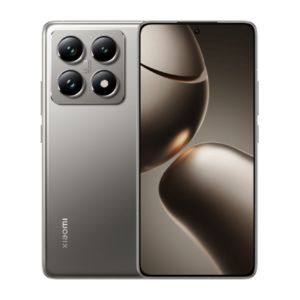
Bagging the fourth spot is the Xiaomi 14T, Xiaomi's latest semi-flagship smartphone. It boasts a 6.67-inch AMOLED display with a 1.5K resolution and a 144Hz refresh rate, ensuring a vibrant and smooth visual experience. The device is powered by the MediaTek Dimensity 8300 Ultra chipset, complemented by 12GB of LPDDR5X RAM and up to 512GB of UFS 4.0 storage, providing robust performance for multitasking and storage needs.
In terms of design, the Xiaomi 14T maintains a sleek aesthetic with pronounced camera cutouts. It is available in Titan Grey, Titan Blue, Titan Black, and Lemon Green colors, with the latter featuring a PU leather finish made from actual lemon fibers. The device also offers IP68 water and dust resistance, adding to its durability.
Leica cameras
Photography enthusiasts will appreciate the Leica-powered triple-camera setup on the Xiaomi 14T. It features a 50MP main camera with a Sony IMX906 sensor, a 50MP telephoto lens with a 50mm equivalent focal length, and a 12MP ultra-wide shooter. For selfies, there's a 32MP front camera. The collaboration with Leica brings exclusive filters and aesthetics, enhancing the overall photography experience. Its pricing positions it as a competitive option in the semi-flagship smartphone market, offering a blend of high-end features and performance.
Xiaomi 14T Specifications:
- Display: 6.67″ FHD+ AMOLED, 144Hz refresh rate, HDR10+, 4000 nits (peak)
- Chipset: Dimensity 8300 Ultra (4nm)
- Memory: 12GB LPDDR5X RAM, 512GB internal storage (UFS 4.0)
- Software & UI: Xiaomi HyperOS
- Rear Camera: Triple (50MP main, 50MP ultrawide, 12MP telephoto)
- Front Camera: 32MP sensor (punch-hole)
- Security: In-display fingerprint sensor (Optical)
- Connectivity: Wi-Fi 802.11 a/b/g/n/ac/6e, dual-band, Wi-Fi Direct, Bluetooth 5.4, A2DP, LE, GPS, GLONASS, GALILEO, BDS, NFC, USB Type-C, OTG
- Sensors: Accelerometer, Barometer, Gyro, Geomagnetic, Hall, Proximity, Ambient Light
- Battery: 5,000mAh with 67W fast charging
- Price in Nepal: Rs. 64,999 (12/512GB)
- Read our Xiaomi 14T review
- Buy Xiaomi 14T here
3. Vivo V50
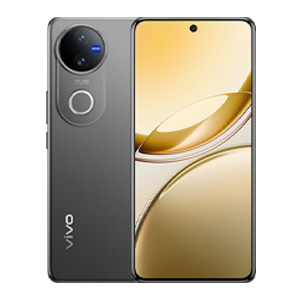
The Vivo V50 secures the third spot on our list of best phones under 70K in Nepal. Vivo’s "V" series is known for its aesthetic appeal, and the V40 stays true to that reputation. It boasts a slim and lightweight profile with a premium finish, making it great for one-handed use. In Nepal, it is available in two elegant color options: Satin Black, Starry Blue. Additionally, the phone comes with an IP68 + IP69 rating, ensuring excellent protection against water and dust.
The 6.77-inch AMOLED panel on the Vivo V50 delivers 1.5K resolution and a 120Hz refresh rate, ensuring a smooth and vibrant viewing experience. Colors, contrast, and brightness levels look impressive, although Vivo has not included Gorilla Glass protection for added durability.
Decent processor
Under the hood, the Vivo V40 is powered by Qualcomm’s Snapdragon 7 Gen 3 (4nm) processor, the same chip used in its predecessor, the V40 and V30. This chipset still offers a solid balance of everyday performance and gaming efficiency with stable thermals.
Vivo promises three years of OS updates and four years of security updates. As for cameras, the 50MP primary and 50MP ultrawide sensors feature ZEISS coating, so the camera is probably some of the best you can get at this price. With a 5,500 mAh battery and 80W fast charging, the Vivo V40 is a reliable beast for all-day endurance.
Vivo V50 Specifications:
- Display: 6.77-inch AMOLED, 120Hz
- Chipset: Snapdragon 7 Gen 3, 4nm process
- RAM & Storage: Up to 12GB RAM, 512GB storage
- Rear Cameras: 50MP (OIS) + 50MP ultrawide
- Front Camera: 50MP
- Battery: 6,000mAh, 90W charging
- OS: Funtouch OS 15 (Android 15)
- Connectivity: Wi-Fi 6 + 6GHz, stereo speakers
- Color Options: Satin Black, Starry Blue
- Security: Optical fingerprint scanner
- Price in Nepal: NPR 67,999 (12/256GB)
- Read our Vivo V50 review
- Buy Vivo V50 here
2. Honor 400
The Honor 400 is a mid-range smartphone that is also an upgrade to its predecessor (Honor 200). It features a 6.55-inch curved AMOLED display that supports a 120Hz refresh rate and over a billion colors, offering a visually sharp experience. At 184 grams and 7.3mm thick, it maintains a relatively slim and lightweight form. The phone is also rated IP65 for dust and water resistance, which provides some basic protection against the elements.
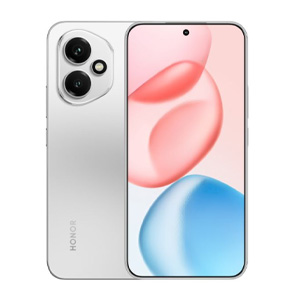
Under the hood, the device runs on the same chip as the honor 200 (Qualcomm’s Snapdragon 7 Gen 3 processor built on a 4nm process), paired with 12GB of RAM and 512GB of storage. It comes preloaded with Android 15 and Honor’s MagicOS 9.0. On the back, there's a 200MP main sensor with OIS and a 12MP ultra-wide camera, while the front houses a 50MP selfie camera. These specs suggest the phone is geared toward users who prioritize mobile photography and performance in everyday use.
Powering the device is a 6000mAh silicon-carbon battery, which supports both 80W wired and wireless charging. Other notable features include stereo speakers, eSIM support, Wi-Fi 6, Bluetooth 5.4, and an in-display fingerprint scanner. It does not include a headphone jack. In Nepal, the Honor 400 is available for Rs. 67,999 for the 12/512GB variant.
Honor 400 Specifications
- Dimensions: 156.5 x 74.6 x 7.3 mm / 184g
- Display: 6.55″ AMOLED curved display, 120Hz refresh rate, 1.07B colors
- Resolution: 2736 × 1264 pixels
- Durability: IP65 dust and water resistance
- Chipset: Qualcomm Snapdragon 7 Gen 3 (4nm)
- Memory/ Storage: 12GB LPDDR5X / 512GB
- OS & UI: Android 15 with MagicOS 9.0
- Rear Camera: 200MP main (OIS), 12MP ultra-wide (f/2.2)
- Front Camera: 50MP (f/2.1)
- Battery: 6000mAh silicon-carbon cell /80W wired SuperCharge, 80W wireless, 5Wreverse charging
- Audio: Stereo speakers (no 3.5mm jack)
- Connectivity: eSIM 5G, Wi-Fi 6, Bluetooth 5.4, NFC, USB Type-C
- Security: In-display fingerprint sensor, Face unlock
- Price in Nepal: Rs. 67,999 (12/512GB)
- Buy Honor 400 here
1. Samsung Galaxy A56
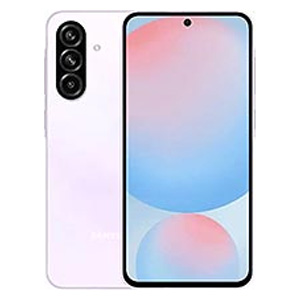
Samsung's Galaxy A56 brings notable upgrades over its predecessor without increasing the price, potentially offering better value than even Samsung's flagship S-series phones. The device features a larger 6.7" display while maintaining a slim profile by trimming the bezels, and Samsung has managed to make the phone both lighter and thinner despite the screen size increase.
The A56 is powered by Samsung's new Exynos 1580 chipset, which marks its debut in this device. The performance is complemented by a versatile camera system featuring optical image stabilization and a bright Super AMOLED display that reaches up to 1900 nits peak brightness, making it easily visible even in bright sunlight.
With its IP67 rating for water and dust resistance and premium build quality featuring Gorilla Glass Victus+ on both front and back, the Galaxy A56 provides durability alongside its performance capabilities. Samsung also promises up to 6 major Android upgrades, making this a device with impressive longevity in the mid-range segment.
Samsung Galaxy A56 Specifications:
- Display: 6.7-inch AMOLED, 120Hz, 1,200 nits peak brightness
- Processor: Exynos 1580
- Memory: 8/12GB RAM, 256GB storage
- Rear Camera: Triple (50MP main, 12MP ultrawide, 5MP macro)
- Front Camera: 32MP, HDR, 4K video recording
- Battery: 5,000mAh, 45W fast charging
- Operating System: One UI 7
- AI Features: Circle to Search, Best Face, Object Eraser
- Price in Nepal: NPR 65,999 (8GB/256GB) | NPR 70,999 (12GB/256GB)
- Buy Samsung Galaxy A56 here
Summary list of best mobile phones under NPR 70000 in Nepal
| S. No. | Best premium midrange phones in Nepal | Price |
| 1 | Samsung Galaxy A56 (8/256GB) | NPR 65,999 |
| 2 | Honor 400 (12/512GB) | NPR 67,999 |
| 3 | Vivo V50 (12/256GB) | NPR 67,999 |
| 4 | Xiaomi 14T (12/512GB) | NPR 64,999 |
| 5 | Nothing Phone (3a) Pro (12/256GB) | NPR 62,999 |
| 6 | OnePlus Nord 4 (12/256GB) | NPR 63,999 |
You might also like:
Do you agree with our choice of the best phones under NPR 60000 in Nepal, or do you want to add something to the list? Have your say in the comments section.
How did we do with this article?
No Active Polls
There are currently no polls available. Check back later for new polls to participate in!
Conversation
We’d love to hear your thoughts! Let's keep it respectful and on-topic. Any inappropriate remarks may be removed. Happy commenting! Privacy Policy
Be the first to share your thoughts—start the conversation!
Latest Articles
Best Tech Deals
No deals available.
Check back later for exciting deals!
More Articles

![Best Mobile Phones Under Rs. 70,000 in Nepal [Updated 2025]](https://media.gadgetbytenepal.com/2025/02/Best-Phones-Under-70000-in-Nepal.jpg)



